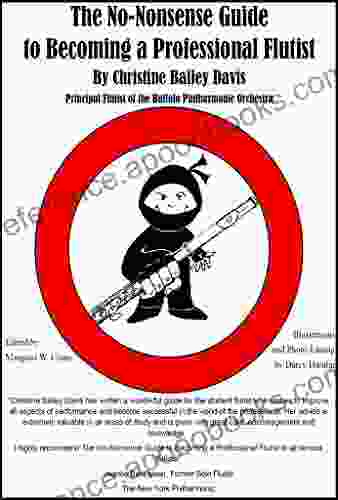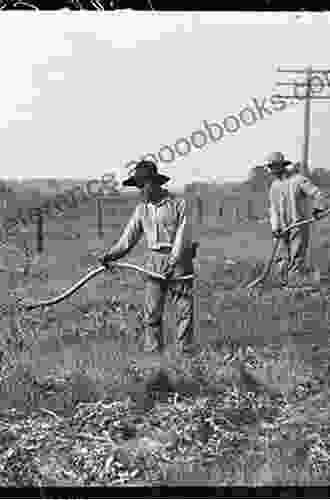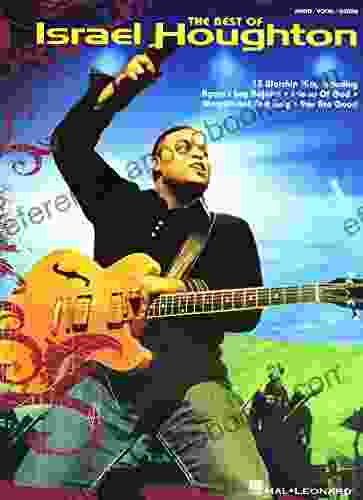The No-Nonsense Guide to Becoming a Professional Flutist

5 out of 5
| Language | : | English |
| File size | : | 6377 KB |
| Text-to-Speech | : | Enabled |
| Screen Reader | : | Supported |
| Enhanced typesetting | : | Enabled |
| Word Wise | : | Enabled |
| Print length | : | 63 pages |
| Lending | : | Enabled |
By [Author's Name]
Are you passionate about playing the flute? Do you dream of making a career out of your music? If so, then this guide is for you.
In this book, I will share everything you need to know to become a professional flutist. I will cover everything from choosing the right instrument to finding work as a musician. I will also provide you with tips and advice on how to improve your playing skills and develop your musicality.
Whether you are just starting out on your musical journey or you are a seasoned professional, I hope that this guide will help you to achieve your goals.
Chapter 1: Choosing the Right Flute
The first step to becoming a professional flutist is choosing the right instrument. There are many different types of flutes available, so it is important to do your research and find one that is right for you.
Here are a few things to consider when choosing a flute:
- Type of flute: There are three main types of flutes: the concert flute, the piccolo, and the alto flute. The concert flute is the most common type of flute, and it is the one that is used in most orchestras and bands. The piccolo is a smaller flute that is pitched an octave higher than the concert flute. The alto flute is a larger flute that is pitched an octave lower than the concert flute.
- Material: Flutes are made from a variety of materials, including wood, metal, and plastic. Wooden flutes have a warm, rich sound, while metal flutes have a brighter, more piercing sound. Plastic flutes are less expensive than wooden or metal flutes, and they are also more durable.
- Size: Flutes come in a variety of sizes. The most common size for adult players is the C flute. However, there are also flutes available in smaller and larger sizes.
Once you have considered these factors, you can start to narrow down your choices. It is a good idea to try out different flutes before you make a final decision. This will help you to find a flute that is comfortable to play and that produces the sound you want.
Chapter 2: Learning to Play the Flute
Once you have chosen a flute, it is time to start learning to play it. There are many different ways to learn how to play the flute. You can take lessons from a private teacher, you can join a flute choir or band, or you can teach yourself using online resources.
No matter how you choose to learn, it is important to be patient and persistent. Learning to play the flute takes time and practice. However, with dedication and hard work, you can achieve your goals.
Here are a few tips for learning to play the flute:
- Start slowly: Don't try to learn too much too quickly. Take your time and focus on mastering the basics.
- Practice regularly: The more you practice, the better you will become. Try to practice for at least 30 minutes each day.
- Listen to recordings: Listening to recordings of professional flutists can help you to improve your playing. Pay attention to their technique and sound.
- Find a teacher: A good teacher can help you to learn proper technique and avoid bad habits.
Chapter 3: Developing Your Musicality
Once you have mastered the basics of playing the flute, it is time to start developing your musicality. This involves learning how to interpret music, express yourself through your playing, and connect with your audience.
Here are a few tips for developing your musicality:
- Study music theory: Music theory can help you to understand how music is constructed. This knowledge will help you to play with more confidence and expression.
- Listen to different types of music: Listening to a variety of music will help you to develop your musical taste and expand your knowledge of the flute repertoire.
- Attend concerts and recitals: Attending concerts and recitals will help you to see professional flutists in action. This can help you to learn new techniques and develop your own musical style.
- Play with others: Playing with others can help you to develop your ensemble skills and learn how to work as a team.
Chapter 4: Finding Work as a Flutist
Once you have developed your skills and musicality, it is time to start finding work as a flutist. There are many different ways to find work as a musician, including:
- Auditioning for orchestras and bands: Orchestras and bands often hold auditions for new members. If you are interested in playing in an orchestra or band, you should audition for as many as possible.
- Teaching private lessons: Teaching private lessons is a great way to earn money and share your love of music with others. You can advertise your services online or in local music stores.
- Playing in community groups: Community groups often need flutists for their concerts and events. Playing in a community group is a great way to get experience and meet other musicians.
- Freelancing: Freelancing is a great way to find work as a flutist if you are not interested in playing in a full-time orchestra or band. You can freelance for a variety of organizations, including schools, churches, and businesses.
Becoming a professional flutist takes time, dedication, and hard work. However, if you are passionate about music and you are willing to put in the effort, you can achieve your goals.
This guide has provided you with the information you need to get started on your journey to becoming a professional flutist. Now it is up to you to take the next step.
5 out of 5
| Language | : | English |
| File size | : | 6377 KB |
| Text-to-Speech | : | Enabled |
| Screen Reader | : | Supported |
| Enhanced typesetting | : | Enabled |
| Word Wise | : | Enabled |
| Print length | : | 63 pages |
| Lending | : | Enabled |
Do you want to contribute by writing guest posts on this blog?
Please contact us and send us a resume of previous articles that you have written.
 Book
Book Novel
Novel Page
Page Chapter
Chapter Text
Text Story
Story Genre
Genre Reader
Reader Library
Library Paperback
Paperback E-book
E-book Magazine
Magazine Newspaper
Newspaper Paragraph
Paragraph Sentence
Sentence Bookmark
Bookmark Shelf
Shelf Glossary
Glossary Bibliography
Bibliography Foreword
Foreword Preface
Preface Synopsis
Synopsis Annotation
Annotation Footnote
Footnote Manuscript
Manuscript Scroll
Scroll Codex
Codex Tome
Tome Bestseller
Bestseller Classics
Classics Library card
Library card Narrative
Narrative Biography
Biography Autobiography
Autobiography Memoir
Memoir Reference
Reference Encyclopedia
Encyclopedia Olga Starostina
Olga Starostina Abby Jimenez
Abby Jimenez Aaron Mcnevin
Aaron Mcnevin L M Bogad
L M Bogad James M Goldgeier
James M Goldgeier Shonna Slayton
Shonna Slayton Kezia Noble
Kezia Noble James H Lubowitz Md
James H Lubowitz Md Quinn Barton
Quinn Barton Roger Hu
Roger Hu Ryan Phoenix
Ryan Phoenix Andy Borowitz
Andy Borowitz Michael Stagg
Michael Stagg Casey White
Casey White Lori Matthews
Lori Matthews A M Hargrove
A M Hargrove Sun Tzu
Sun Tzu Michael Robotham
Michael Robotham John Vigor
John Vigor Diandre Mcnatte
Diandre Mcnatte
Light bulbAdvertise smarter! Our strategic ad space ensures maximum exposure. Reserve your spot today!
 Ian MitchellFollow ·11.9k
Ian MitchellFollow ·11.9k Emilio CoxFollow ·4.5k
Emilio CoxFollow ·4.5k Elton HayesFollow ·15.6k
Elton HayesFollow ·15.6k Anton FosterFollow ·10.9k
Anton FosterFollow ·10.9k Damon HayesFollow ·16.6k
Damon HayesFollow ·16.6k Alex FosterFollow ·2.2k
Alex FosterFollow ·2.2k Bruce SnyderFollow ·17.7k
Bruce SnyderFollow ·17.7k Warren BellFollow ·6.9k
Warren BellFollow ·6.9k

 Justin Bell
Justin BellUnlock National Biology Success: The Ultimate Guide to...
Mastering the Fundamentals: A Comprehensive...
 Luke Blair
Luke BlairAC/DC: The Early Years with Bon Scott – A Thunderstruck...
In the annals of rock and roll history, few...
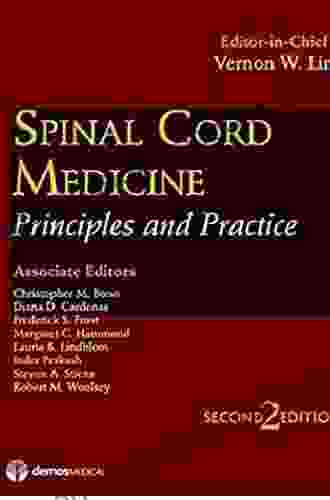
 Darren Nelson
Darren NelsonSpinal Cord Medicine Second Edition: The Comprehensive...
The second edition of Spinal Cord Medicine...
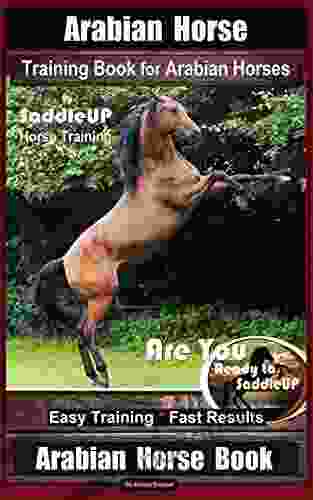
 Cole Powell
Cole PowellArabian Horse Training: Unlock the Secrets for a...
Indulge in the captivating world of Arabian...
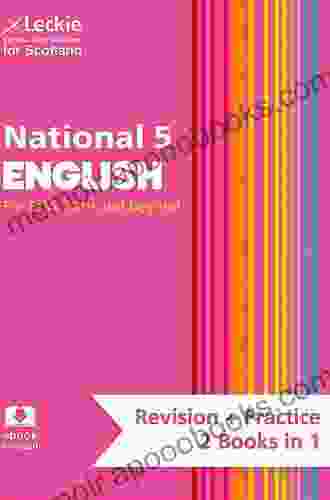
 Oscar Wilde
Oscar WildeRevise Curriculum For Excellence SQA Exams: The Ultimate...
The Scottish...

 David Peterson
David PetersonEndoscopic Ear Surgery: A Comprehensive Guide for...
Endoscopic Ear...
5 out of 5
| Language | : | English |
| File size | : | 6377 KB |
| Text-to-Speech | : | Enabled |
| Screen Reader | : | Supported |
| Enhanced typesetting | : | Enabled |
| Word Wise | : | Enabled |
| Print length | : | 63 pages |
| Lending | : | Enabled |


